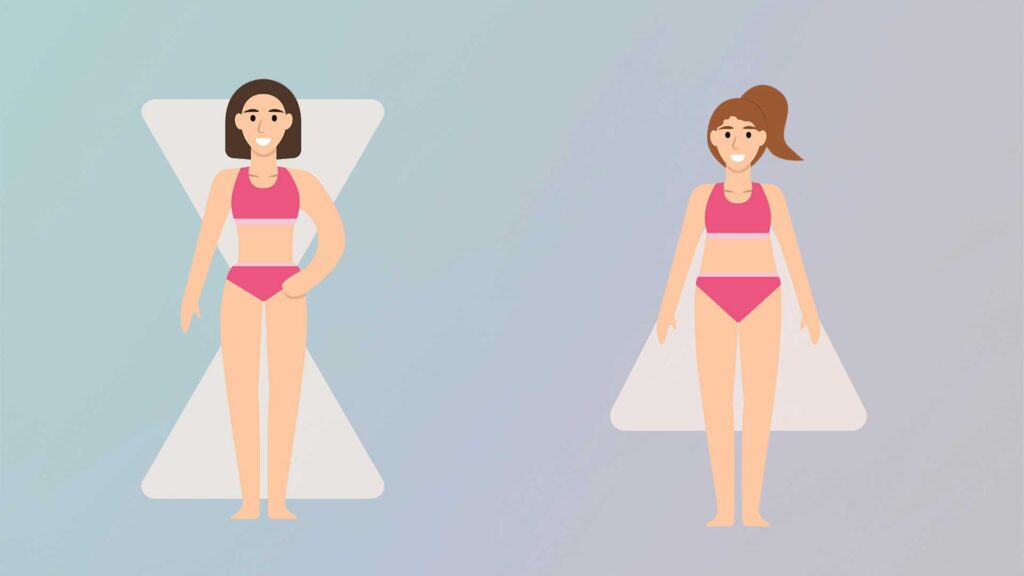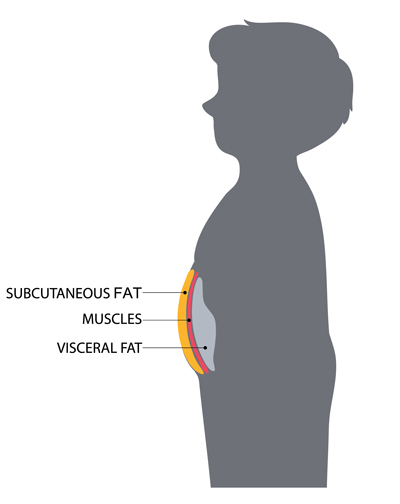Since 1970, under the federal Title X program, sexual health clinics have been permitted to administer birth control to minors, with or without parental consent, in every state. The program’s goal, per the National Center for Youth Law, is simple: to “prevent unwanted pregnancies among sexually active adolescents.” One of the key aspects of the program, which leads to its success, is confidentiality. Minors can seek the care they need when they need it without humiliation, fear of retribution, or worse.
Early this spring, the 5th Circuit Court of Appeals jeopardized the program’s mission. A three-judge panel upheld a Texas law that required family planning clinics to obtain parental consent before distributing birth control to minors. Six other states have introduced similar bills.
Related story
Is It Time to Talk to Your Doctor About Your Period?
Per Guttmacher, the bills “mirror prior efforts to normalize parental consent and involvement laws for abortion access,” which can increase stigma around birth control and lead to safety concerns for minors — like, for example, being kicked out of their home for trying to get birth control.
On a small scale, the bills and the decision by the 5th Circuit make accessing birth control harder for teens in those states. The consequence will be more unplanned teen pregnancies. Studies of parental consent requirements consistently show that parental involvement “would discourage few teenagers from having sex, but would likely result in more teenagers’ using the least effective methods, such as withdrawal, or no method at all.”
On a larger scale, though, the impact is not limited to teens in a few states. Teens throughout the country will be affected by the mandates, which will certainly “contribute to the continued erosion of reproductive rights for young people, who are among the most vulnerable to attacks on bodily autonomy,” according to a statement from Jane’s Due Process, a teen reproductive rights organization in Texas.
SheKnows spoke to medical and legal experts to help parents — and teens — understand the discourse around parental consent requirements and how bills like the one in Texas could change things for your teen, especially during an election year where reproductive rights are at stake.
Related story
Is It Time to Talk to Your Doctor About Your Period?
Why Is Birth Control a Target?
Proponents of parental consent mandates rely heavily on the stigma around birth control to push their agenda. They take advantage of the fact that a significant percentage of the population confuses birth control, emergency contraception, and often the basic facts about pregnancy. They use this confusion to liken birth control to abortion, which then inflames a particular — usually the far right — segment of the population.
Groups like Human Life International and Student for Life of America stir up this confusion by redefining when pregnancy starts. Medical experts, including the American College of Obstetricians and Gynecologists, agree that pregnancy begins after a fertilized egg attaches to the lining of the uterine wall— AKA implantation. These groups make the misleading argument that pregnancy begins earlier — before implantation — and equate anything that prevents either ovulation (release of an egg) or fertilization with abortion. Essentially, they make the argument that birth control can abort a pregnancy before that pregnancy even begins.
The goal is to “make it confusing, make people fear things, and people who might be against abortion want to align with others who think similarly, so when birth control gets looped in with one of their issues that kind of fuels the fire,” Dale Margolin Cecka, assistant professor of law at the Albany Law School and director of the Family Violence Litigation Clinic, tells SheKnows. “A lot is smoke and mirrors.”
When it comes to minors, the stigma around birth control is even more pronounced. “Whenever we start to talk about children, people get nervous. They don’t like the idea of their own kids having sex,” Jessie Hill, JD, the associate dean and Judge Ben C. Green Professor of Law at Case Western Reserve University who specializes in reproductive rights, confirms to SheKnows.
Not only do they not like the idea, but many are also misinformed. “Many parents feel uncomfortable discussing sexual and reproductive health topics openly, partly because of insufficient sex education,” Dr. Jason Bell, an OB-GYN and director of medical affairs at Organon, tells SheKnows.
When it comes to birth control specifically, among some parents there’s a prevailing ( and mistaken) impression that making contraception available will encourage teens to have sex. But the reality is, teens are having sex — whether they’re seeking out birth control or not.
“This country has a hang-up about sex and is in absolute denial about the statistics of how many high school students have sex,” notes Dr. Sophia Yen, co-founder and CEO of Pandia Health, an online hormonal health clinic focusing on reproductive health. According to Dr. Yen, approximately 10 percent of high school freshmen are having sex. That number jumps 10 percent every year — meaning approximately 40 percent of high school seniors are having or had heterosexual sex.
It’s also important to remember that birth control isn’t always about sex. “[S]ome young women may seek a birth control option for reasons other than pregnancy prevention, like to help lighten periods, have less painful periods, or improve acne,” Dr. Bell said.
Targeting teenagers’ access to birth control is just “fear-mongering moral panic…and it’s just trying to drum up fear and confusion,” confirms Cecka.
‘A Gray Area’: Why Minors’ Access To Birth Control Is a Target
The stigma around birth control for minors is just one of the factors driving some states to impose restrictions on adolescents’ access to birth control. The other big factor behind the push: ambiguous case law. “Legally speaking, this is in a gray area in terms of the rights and when and under what circumstances minors have a right to access contraception without parental consent,” Hill says. “There’s some case law indicating that minors have a right to access contraception, but it’s not as clear that they have a right without parents involved.”
The ambiguity leads into a conversation about protecting parental rights. Proponents of the bills argue that allowing teens to access birth control without parental consent violates a parent’s right — codified in the 14th Amendment — to make decisions about custody and care of children.
But this argument muddies the purpose of the 14th Amendment. “My view is that parental consent is not a good claim because that’s not what this is about,” says Hill, who emphasizes that the 14th Amendment is supposed to protect families from the government interfering with parental decisions. However, mandates like the one in Texas are actually inviting states to intervene in family matters.
Parental Consent Requirements Will Negatively Impact Teens
Behind the discussion about murky case law, religious beliefs, and parental rights is the simple truth that, despite our differences, most of us want to do what’s best for our teens. Fortunately, regarding this, there is clarity: parental consent requirements are not best for our teens.
Teens are less likely to seek out sexual health services when parental involvement is mandated, but not less likely to have sex. “They will continue, and they just won’t get birth control, and that results in unplanned pregnancies,” says Dr. Yen.
The research confirms Dr. Yen’s conclusion. One recent study out of Texas reviewed adolescents’ experiences accessing confidential birth control and found that less than half were able to attend an appointment for contraception. The study found that “[p]articipants wanted to be proactive about preventing pregnancy by using more effective contraceptive methods but faced resistance from adults when they initiated conversations about sex and contraception or tried to obtain consent.”
“Abstinence is only 100% effective until sexual activity begins,” says Dr. Bell, who notes that his public health training “emphasizes the importance of open access to education on birth control and accessibility to the various options because it helps prevent unintended pregnancies.”
Teens are less likely to seek out sexual health services even in families where teens voluntarily share a lot of health information with their parents and other trusted adults, confirms Dr. Yen. She urges parents to remember themselves as teenagers and to ask themselves this question: “Did you tell your parents when you started having sex?” For most of us, the answer is no.
For some teens, involving their parents in their decision to seek out sexual health services could result in dangerous consequences. Many minors who don’t involve parents or trusted adults in their decision to get contraception have a reason. “We’ve seen parents kick young women out of the house, and have heard one story of a family setting their daughter on fire,” says Dr. Yen.
While all teens will likely be negatively impacted, the unfortunate reality is that low-income and teens from marginalized populations will be most affected. They will have the most trouble accessing or navigating out-of-state family planning services or using telehealth. And, of course, since in most of these states abortion is also harder to access or illegal, these teens will also have the most trouble obtaining state support after the baby is born, says Cecka.
Parental Consent Laws As A Stepping Stone To Further Restrictions
Open access to contraception is not just about preventing teen pregnancy. The true cost of imposing parental consent mandates will be felt through the “whole menu of sexual health services Title X clinics offer, including testing for STIs,” notes Cecka. “We’ve come so far with reproductive health for young people, and this [mandating parental consent] really could start to unravel so much of what health education is about.”
This reality has already played out. A 2006 study found teenage girls who reported forgoing healthcare due to confidentiality concerns had a higher prevalence of not using birth control at last sexual intercourse, prior history of sexually transmitted infection, and mental health concerns.
The unavoidable truth is that limiting teen’s access to contraception is not just about birth control. It’s another step on a slippery slope toward restricting all women’s access to contraception and sexual health services.
A study published earlier this year in Health Affairs affirms this. The study found evidence that barriers to birth control had increased in at least four states and “reports of receiving high-quality contraceptive care” had decreased since Roe was overturned. The study authors highlight that one of the fallouts of the Dobbs decision is that “access to broader contraceptive care is worsening.”
“[I]t’s really part of a larger just overall agenda of putting a woman’s body in the hands of legislators and with priorities that align with restricting reproductive rights as a whole,” confirms Cecka.
Considering that we’re in our first post-Dobbs presidential election year and reproductive rights are particularly at stake, the push toward parental consent mandates is of concern to all teens and parents, whether they live in a state like Texas or not. It’s another roadblock for women to make decisions about their body — and this time, the impacts will be felt by our teens.
Before you go, read about the celebrities who’ve opened up about their abortion experiences:




































